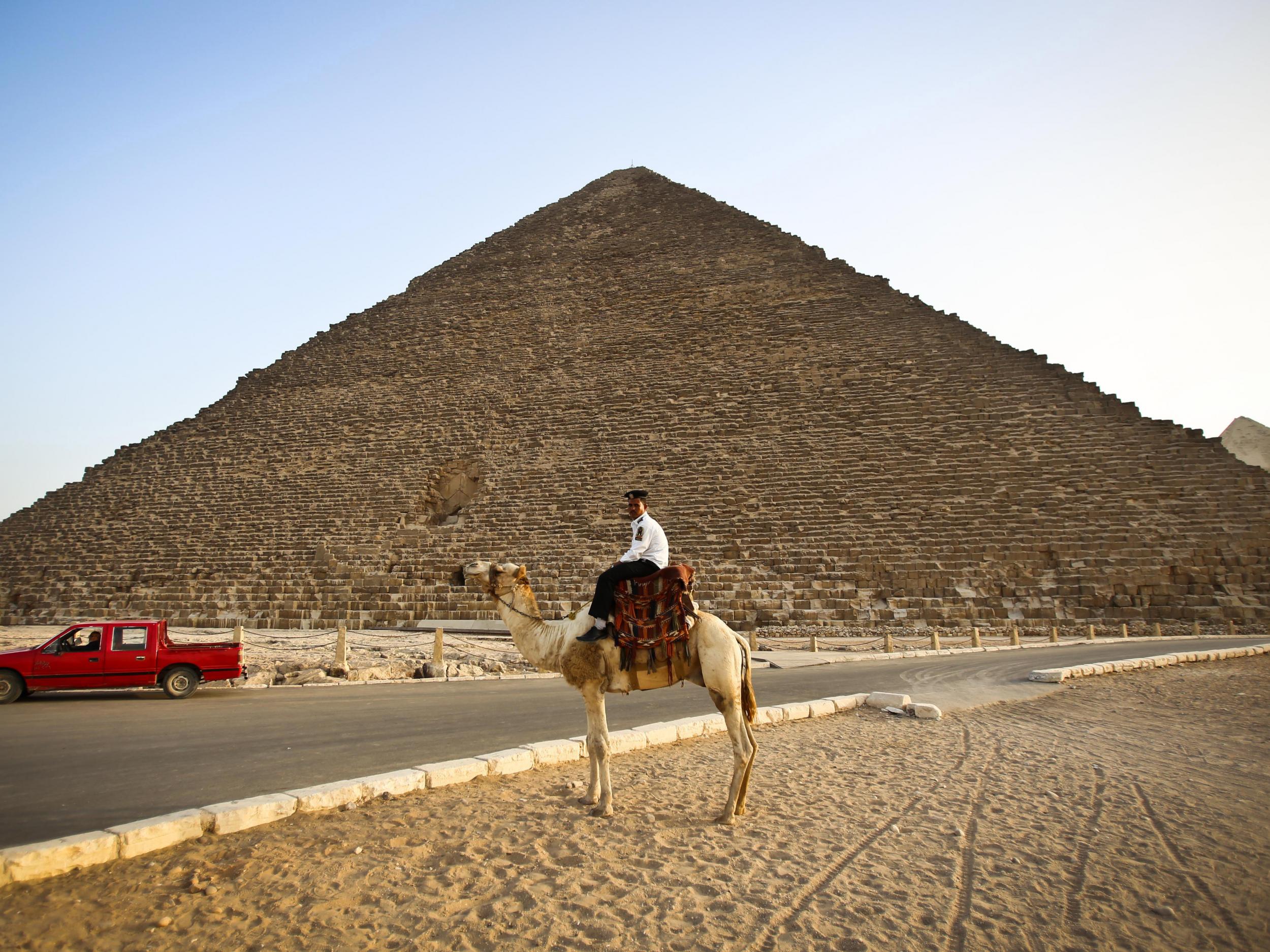Scientists think they may have discovered two new rooms in the Great Pyramid of Giza
Scans of the ancient structure show anomalies, which researchers believe indicate unexplored 'cavaties'

Your support helps us to tell the story
From reproductive rights to climate change to Big Tech, The Independent is on the ground when the story is developing. Whether it's investigating the financials of Elon Musk's pro-Trump PAC or producing our latest documentary, 'The A Word', which shines a light on the American women fighting for reproductive rights, we know how important it is to parse out the facts from the messaging.
At such a critical moment in US history, we need reporters on the ground. Your donation allows us to keep sending journalists to speak to both sides of the story.
The Independent is trusted by Americans across the entire political spectrum. And unlike many other quality news outlets, we choose not to lock Americans out of our reporting and analysis with paywalls. We believe quality journalism should be available to everyone, paid for by those who can afford it.
Your support makes all the difference.Scientists may have discovered hidden chambers in the Great Pyramid of Giza.
Two previously undiscovered “cavities” or “voids” have shown up in scans of Egypt’s largest pyramid, researchers said on Saturday.
But the Egyptian antiquities ministry have urged caution, releasing a statement announcing “anomalies” in data gathered on the monument and stating they were not necessarily rooms or even sizeable voids.
The 480ft structure was built 4,500 years ago for King Khufu and is considered to be one of the seven wonders of the ancient world.
It has three known chambers, and like other pyramids in Egypt was intended as a pharaoh's tomb.
“We are now able to confirm the existence of a 'void' hidden behind the north face, that could have the form of at least one corridor going inside the Great Pyramid,” scientists from Operation ScanPyramids said in a statement.
Another “cavity” was discovered on the pyramid's north-east flank, the researchers said.
In October last year Operation ScanPyramids began searching for hidden rooms inside the Khufu and Khafre pyramids in Giza, and the Bent and Red pyramids in Dashur.
The team, made up of researchers from different universities, institutes, and companies, used non-invasive and non-destructive techniques, including infrared thermography, muon radiography imaging, and 3D reconstruction.
Muons are “similar to X-rays which can penetrate the body and allow bone imaging” and “can go through hundreds of meters of stone before being absorbed,” ScanPyramids explained in a statement.
“Judiciously placed detectors — for example inside a pyramid, below a potential, unknown chamber — can then record particle tracks and discern cavities from denser regions.”
The Antiquities Ministry, who have employed a team of scientists to oversee Operation ScanPyramid's work, said more tests needed to be carried out to confirm the finding and then to determine the nature, size, and function of the rooms, if they do exist.
The oversight team is led by former antiquities minister Zahi Hawass and includes several Egyptologists with decades of experience. Mark Lehner, who has been conducting work at Giza for about 30 years, is one of the team members.
The Ministry team recommended extending the Scan Pyramids project by another year so more data can be gathered.
Mr Hawass told Live Science the results obtained by the Scan Pyramid team may be the result of different-size stones used in the Great Pyramid and may not indicate the presence of sizeable voids.
“The core [of the pyramid] has big and small stones, and this can show hollows everywhere,” he said. The oversight team “asked for more work to know the size and the function” of the anomalies, Mr Hawass said.
The Ministry are understandably cautious about confirming the finding, given past precedent.
In late 2015, Egypt started radar scans of Tutankhamun's tomb in the Valley of the Kings in southern Egypt, after a British archaeologist suggested Nefertiti might be buried in a secret chamber there.
Nicholas Reeves suggested Tutankhamun's tomb was in fact Nefertiti's, and when the boy king died unexpectedly at a young age, he was rushed into her tomb's outer chamber.
An initial scan suggested the tomb may exist, but more detailed scans carried out earlier this year proved it did not.
By the time the theory was disproved, officials in the Egyptian antiquities ministry, as well as the tourism ministry, had already publicly stated they believed a hidden chamber, possibly containing Nefertiti's tomb, likely existed, forcing the department to backtrack in embarrassment.
Join our commenting forum
Join thought-provoking conversations, follow other Independent readers and see their replies
Comments